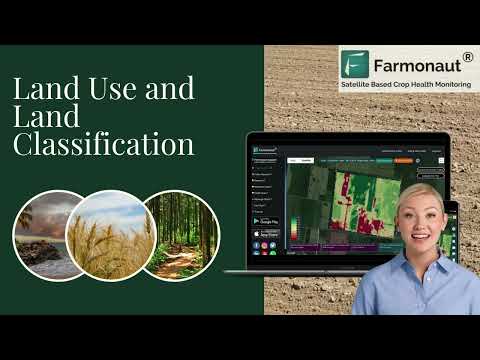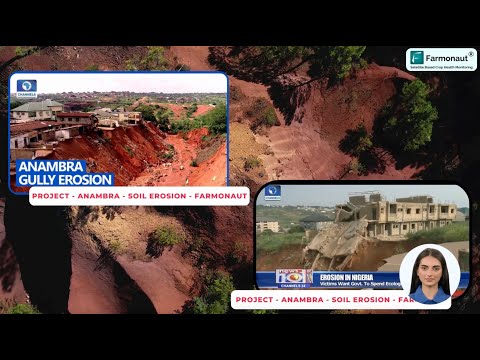Montana’s Air Quality Revolution: How Tribal Communities and Schools Are Fighting Wildfire Smoke Exposure

“Montana’s air quality monitoring network uses PurpleAir monitors across the state to collect real-time data on wildfire smoke exposure.”
In the heart of the Mountain West, Montana is pioneering a revolution in air quality monitoring and management. As wildfire seasons intensify and smoke becomes an increasingly prevalent health concern, communities across the Treasure State are banding together to combat this invisible threat. We’re witnessing a unique blend of Western science and tribal knowledge, creating a comprehensive approach to air quality monitoring that’s setting a new standard for the region.
The Birth of a Statewide Network
At the forefront of this initiative is the collaboration between the University of Montana’s Montana Climate Office (MCO) and the Confederated Salish and Kootenai Tribes (CSKT). Together, they’ve embarked on an ambitious project to install the first comprehensive PurpleAir network across the Flathead Reservation. This network of affordable air quality monitors is revolutionizing how we collect and interpret real-time data on local air conditions.
Kyle Bocinsky, the MCO director of climate extension, emphasizes the importance of respecting tribal sovereignty in this partnership. “When you’re partnering with tribes, it’s crucial to understand what you can help provide while still honoring tribal sovereignty,” he explains. This collaborative spirit has ensured that CSKT maintains agency over their environmental monitoring while benefiting from cutting-edge technology.
From Local Initiative to Statewide Impact
The air quality sensor network on the Flathead Reservation is part of a larger, more comprehensive plan known as the Climate Change Strategic Plan. This forward-thinking initiative, led by Mike Durglo, the CSKT Climate Program director, is one of the first tribal programs in the United States to create a framework for community climate change adaptation. The plan encompasses multiple sectors, including air, water, forestry, wildlife, land, fisheries, people, culture, infrastructure, and human health.
With support from the National Oceanic and Atmospheric Administration’s National Integrated Drought Information System, the tribes have secured funding to expand their air quality monitoring capabilities. This local effort plugs into a broader statewide initiative by the Montana Department of Environmental Quality to enhance air quality monitoring across Montana.
Community Engagement and Education
One of the most inspiring aspects of this air quality revolution is the involvement of students and teachers across the reservation. Schools have become hubs for air quality monitoring and education, with students taking an active role in data analysis and advocacy for cleaner air practices.
Bonnie White, a math and science teacher at Arlee High School, shares how student participation has been transformative. “The PurpleAir data transcends math and science classes,” she explains. “It allows the students to dive in, see what’s happening in real-time, and learn as they go. It’s pretty rewarding to make connections that can lead to solutions for your community.”
In a remarkable display of student initiative, Arlee High School students used data from their PurpleAir monitor to track PM2.5 particles emitted by the school’s coal-burning furnace. Armed with this information, they successfully petitioned the school board for an updated heating system, even helping to write grants to fund the transition to an all-electric heating system in 2018.
Real-Time Data: A Game-Changer for Public Health
The power of real-time air quality data cannot be overstated. It enables communities to make informed decisions about outdoor activities, school closures, and other public health measures during periods of poor air quality. This information is particularly crucial in Montana, which ranks among the top four states in the U.S. for smoke exposure.
Researchers at the University of Montana’s Center for Population Health Research are leveraging this data to study the unique health implications of smoke exposure in the Mountain West. Dr. Erin Landguth leads a team of scientists analyzing how long-term PM2.5 exposure within intermountain rural communities influences health outcomes.
Explore Farmonaut’s advanced agricultural solutions

Expanding the Network: Indoor and Outdoor Monitoring
The PurpleAirs in Schools Project, a collaboration between the Montana Department of Environmental Quality and the Center for Population Health Research, has expanded air quality monitoring to high schools across the state. This initiative provides both outdoor and indoor air monitors, offering a comprehensive view of air quality conditions in these community hubs.
Dave Jones and Ethan Walker, researchers involved in the project, emphasize the importance of this dual approach. “High schools are often at the center of the community and where everything happens,” Jones notes. “This makes it a representative place to monitor air quality and get the public engaged.”
“Students in Montana actively participate in analyzing air quality data from over 100 monitoring stations to advocate for cleaner air practices.”
The Unique Challenges of Mountain West Air Quality
Montana’s geography and climate present unique challenges for air quality management. The state experiences two distinct seasons of smoke pollution: wildfire summers and wood-burning winters. This puts residents at a higher risk for PM2.5 inhalation year-round.
To address these challenges, researchers are developing more accurate air quality models that account for the unique topography and weather patterns of Mountain West states. These models integrate climatic, environmental, and socioeconomic factors to provide a comprehensive understanding of air quality impacts on public health.
Tribal Knowledge and Western Science: A Powerful Combination
The integration of tribal knowledge with Western scientific methods is a cornerstone of Montana’s air quality revolution. This approach ensures that the monitoring network is not only technically sound but also culturally relevant and respectful of tribal sovereignty.
CSKT’s Climate Change Strategic Plan, which incorporates the air quality monitoring network, is a prime example of this integration. The plan, which received a Native Nations Traditional Ecological Knowledge award, demonstrates how indigenous wisdom can inform and enhance modern environmental management practices.
Public Awareness and Community Action
A key goal of the air quality monitoring initiative is to foster public awareness about the impacts of smoke and the importance of indoor air quality. The network aims to develop proactive measures for mitigating air pollution, including:
- Promoting proper burning practices
- Monitoring indoor air quality by managing building fresh air intakes
- Ensuring proper filters are in place
- Designating safe indoor spaces for people to gather during poor air quality events
By leveraging student enthusiasm and community engagement, the initiative is creating a ripple effect of awareness and action across Montana.
Explore Farmonaut’s API for advanced agricultural data
The Future of Air Quality Monitoring in Montana
As the air quality monitoring network continues to expand, researchers and community leaders are looking towards the future. The goal is to create a comprehensive system that not only provides real-time data but also informs policy decisions and public health interventions.
The collaboration between tribal communities, schools, researchers, and state agencies sets a powerful example for other Western communities facing similar environmental challenges. By combining traditional knowledge with cutting-edge technology, Montana is paving the way for a more resilient and health-conscious future.
Air Quality Monitoring Network in Montana: A Comprehensive Overview
| Location | Number of PurpleAir Monitors | Primary Pollutants Monitored | Average AQI (Wildfire Season) | Community Involvement | Health Impact Assessment |
|---|---|---|---|---|---|
| Flathead Reservation | 30 | PM2.5 | 150-200 | High | Significant |
| Missoula County | 25 | PM2.5, CO | 100-150 | High | Moderate |
| Bozeman | 15 | PM2.5, NO2 | 75-125 | Medium | Moderate |
| Billings | 20 | PM2.5, O3 | 100-175 | Medium | Significant |
| Rural Schools | 50 | PM2.5 | 125-175 | High | Moderate to Significant |
This table provides a snapshot of the air quality monitoring efforts across Montana, highlighting the extensive network of PurpleAir monitors and the varying levels of community involvement and health impacts in different regions.
Innovative Approaches to Data Analysis and Visualization
As the air quality monitoring network grows, so does the need for innovative approaches to data analysis and visualization. Researchers and students are developing new ways to interpret and present the vast amounts of data collected by the PurpleAir monitors.
These efforts include:
- Creating interactive maps that show real-time air quality across the state
- Developing predictive models to forecast air quality based on weather patterns and fire activity
- Designing user-friendly apps that allow residents to easily access and understand air quality data
- Integrating air quality data with other environmental and health metrics to provide a more comprehensive picture of community well-being
Access Farmonaut’s API Developer Docs for integration
The Role of Technology in Environmental Monitoring
The success of Montana’s air quality monitoring network underscores the critical role that technology plays in modern environmental management. By leveraging affordable, easy-to-use devices like PurpleAir monitors, communities can gather precise, localized data that was previously unavailable or prohibitively expensive to collect.
This democratization of environmental monitoring has far-reaching implications, empowering communities to:
- Make data-driven decisions about public health and safety
- Advocate for policy changes based on concrete evidence
- Engage in citizen science projects that contribute to broader scientific understanding
- Develop targeted interventions to protect vulnerable populations during poor air quality events
Building Resilience in the Face of Climate Change
Montana’s air quality monitoring initiative is more than just a data collection effort; it’s a crucial component of the state’s broader strategy to build resilience in the face of climate change. By providing communities with the tools and knowledge to understand and respond to air quality challenges, the initiative is helping to create a more adaptable and prepared population.
Key aspects of this resilience-building effort include:
- Educating residents about the health impacts of poor air quality and strategies for protection
- Developing emergency response plans that incorporate real-time air quality data
- Encouraging the adoption of clean energy and sustainable practices to reduce overall pollution
- Fostering collaboration between different sectors (health, education, environmental) to create comprehensive solutions
The Importance of Continued Research and Innovation
As Montana’s air quality monitoring network continues to evolve, ongoing research and innovation will be crucial to its success. Scientists and community leaders are constantly seeking new ways to improve the accuracy, accessibility, and usefulness of the data collected.
Areas of focus for future research include:
- Developing more sophisticated algorithms for interpreting air quality data
- Exploring the long-term health impacts of chronic smoke exposure in mountain communities
- Investigating the effectiveness of various interventions in reducing personal exposure to air pollution
- Studying the interplay between air quality and other environmental factors, such as water quality and soil health
A Model for Other Communities
Montana’s innovative approach to air quality monitoring and management serves as a model for other communities facing similar environmental challenges. The success of this initiative demonstrates the power of collaboration between scientific institutions, tribal communities, schools, and government agencies in addressing complex environmental issues.
Key lessons that other communities can learn from Montana’s experience include:
- The importance of integrating traditional knowledge with modern scientific methods
- The value of engaging young people and schools in environmental monitoring efforts
- The power of real-time, localized data in informing public health decisions
- The need for a comprehensive, multi-sector approach to environmental challenges
Conclusion: A Breath of Fresh Air for Montana’s Future
Montana’s air quality revolution represents a significant step forward in the state’s efforts to protect public health and adapt to the challenges of climate change. By combining cutting-edge technology with community engagement and traditional knowledge, Montana is creating a comprehensive, responsive system for monitoring and managing air quality.
As wildfires continue to pose a significant threat to air quality in the Mountain West, initiatives like this will become increasingly important. Montana’s example shows that with collaboration, innovation, and a commitment to community well-being, it’s possible to create effective solutions to even the most complex environmental challenges.
The journey towards cleaner air and better health outcomes for all Montanans is ongoing, but with each new monitor installed and each student engaged, the state moves closer to a future where clean air is not just an aspiration, but a reality for all its residents.
FAQ Section
- What is the PurpleAir network?
The PurpleAir network is a system of affordable air quality monitors that collect real-time data on air pollutants, particularly PM2.5 particles. These monitors are installed across Montana to provide localized air quality information. - How does wildfire smoke affect health?
Wildfire smoke can cause respiratory issues, exacerbate existing health conditions, and lead to long-term health problems. It’s particularly dangerous for children, elderly individuals, and those with pre-existing respiratory or cardiovascular conditions. - How can I access air quality data for my area?
Air quality data is typically available through state environmental agencies’ websites or mobile apps. In Montana, you can also check with local schools or tribal offices that are part of the monitoring network. - What can individuals do to protect themselves from poor air quality?
Stay indoors when air quality is poor, use air purifiers, wear N95 masks when outdoors, and follow local health advisories. It’s also important to stay hydrated and avoid strenuous activities during high pollution events. - How are schools involved in air quality monitoring?
Many schools in Montana have installed PurpleAir monitors and integrated air quality science into their curriculum. Students are involved in data collection, analysis, and community education efforts.
Earn With Farmonaut: Join our Affiliate Program
Earn 20% recurring commission with Farmonaut’s affiliate program by sharing your promo code and helping farmers save 10%. Onboard 10 Elite farmers monthly to earn a minimum of $148,000 annually—start now and grow your income!





